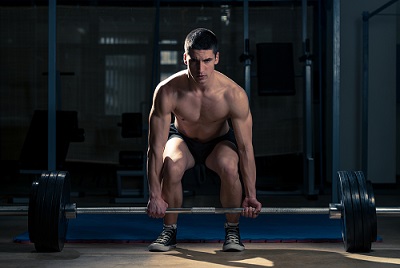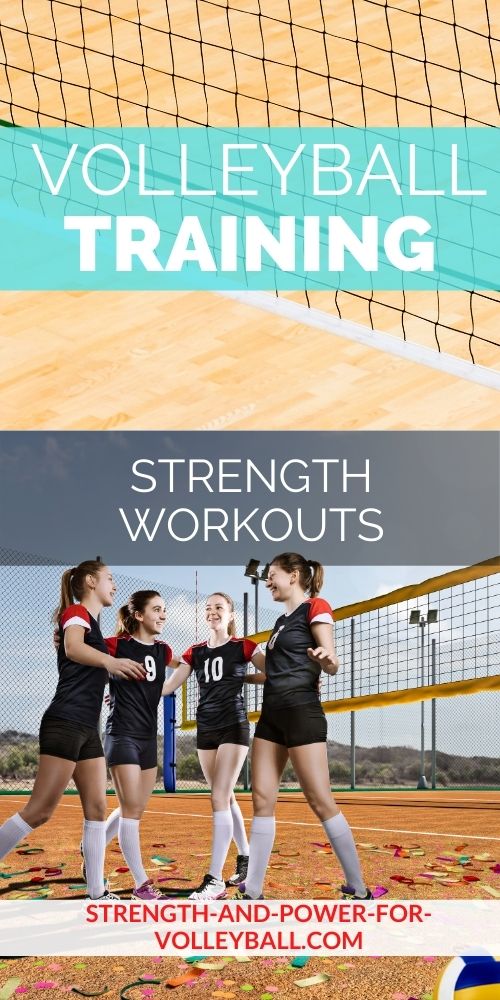Volleyball Strength Training
Functional Hamstring Exercises
Your volleyball strength training should include a balance of functional strength exercises. Often exercises that work to strengthen the hamstrings are left out of training.
Hamstrings have two major functions...
- Knee flexion
- Hip Extension
Your strength training should involve exercises for both hip extensor function and knee flexor function.
Hamstrings are connected as part of a chain to the gluteal and back extensor muscles.
A few good hamstring functional strength training exercises are...
-
Deadlift
-
Romanian Deadlift
-
Single Leg Deadlift (SLDL)
The Single Leg Deadlift trains coordination and balance while working the hamstings. This is a great functional exercise because it trains the hamstrings while also training the core in an unstable environment.
Deadlifts are a great total body exercise that work hip extension power, the guteal and hamstring muscles.
With the Romanian Deadlift, you are performing a deadlift variation
involving less knee flexion to work the
hamstrings more effectively.
Conventional deadlifts, Romanian deadlifts, and single leg deadlifts, are all great volleyball strength training exercises that work the hamstrings in conjunction with the hips.
However, another great exercise for training the hamstrings involves lying on the ground using a physioball.
Physioball Leg Curl
Even though this lying-down position is not specific to sprinting or jumping, this is a perfect example of how a nonfunctional position can be made extremely functional.
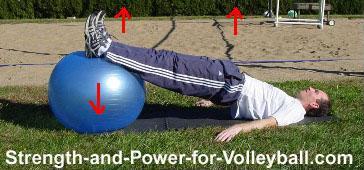
Horizontal forces acting on the legs and hips at the start
The arrows in the photo above represent the horizontal forces acting on the legs and hips at the start of the physioball leg curl. The legs are pushing against the ball, lifting the hips upward.
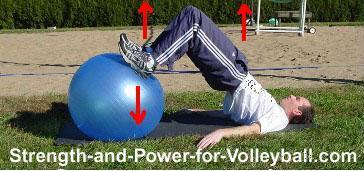
The beginning position of the two leg physioball curl
This movement is done by first starting in glute bridge position by lifting your hips up off the ground. Then, while keeping your hips and inner core activated, roll the ball towards you by using your hamstrings and keeping your glute muscles activated. Each repetition is performed by rolling the ball to 90 degree knee flexion and then back to glute bridge start position.
During the volleyball approach, the foot is in contact with the ground and the bodys center mass is being moved over the foot.
The foot acts as the origin of movement, not the hips.
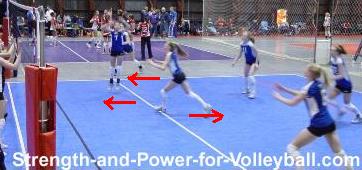
Horizontal forces during the plant phase of the approach
The arrows in this photo represent the horizontal forces during the plant phase of foot steps during the volleyball approach.
Do you see how the movement of the physioball leg curl and volleyball approach are similar?
The arrows represent the horizontal forces of the middle hitter during the approach. The hips are powered forward (the top arrow), the planted foot is pulling back (bottom right arrow), and the ground reaction forces are pulling forward (bottom left arrow).
The physioball leg curl exercise lacks the vertical forces of running and jumping but closely simulates the horizontal forces experienced on the hips and hamstrings during the plant phase of forward movement.

The end position of the single leg curl
The photo on the right is the top position of a single leg curl. The single leg curl involves the same movement as the two leg curl except the exercise is much more difficult because you must balance using just one leg.
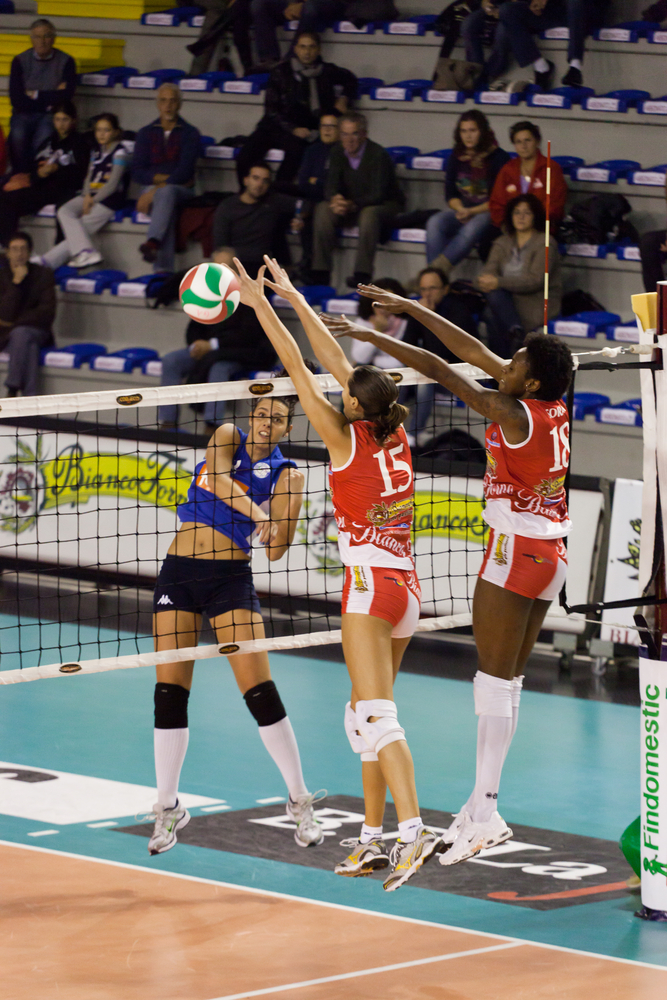
This exercise trains a high level of core stability, which is crucial to developing strength and explosive power.
All volleyball players should have volleyball strength training exercises that focus on functional biomechanics as part of their strength training.
Be cautious of exercises that resist a muscles nonfunctional motion for the sake of strengthening that muscle in an isolated action (for example, a machine leg curl).
Doing so could possibly create muscular imbalances and add to dysfunctional movement.
If you enjoyed these tips and would like to keep it close to you at any time, just save this pin to your Pinterest Volleyball Training Board.
Physioball Leg Curl Vs. Machine Leg Curl
With machine leg curls, the hips aren't being activated. The hamstrings are being used in isolation. Also, the machine stabilizes the body during movement. Not only is this exercise non-functional, but you may actually be training yourself to be less athletic. To be effective at making athletic plays in volleyball, a significant part of your volleyball strength training should involve developing core stability strength.
The physioball leg curls are good for volleyball strength training because the hips are activated much like they are when making athletic forward movements such as sprinting or jumping.
Core stability is trained by keeping constant tension in the hips and hamstrings during the exercise movement.
Also, the glutes are fired first which is important when considering the importance of firing the right muscles at the right time.
Functional Volleyball Strength Training Related Pages
Volleyball Player Functional Training
Shoulder Stabilization StrengthVolleyball › Smarter Training › Training the Hamstrings
